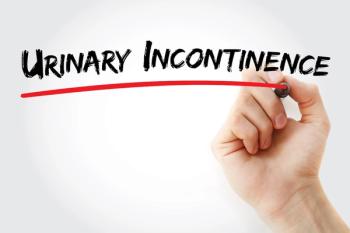
Public Hospitals More Likely to Extend Unprofitable Services After 340B Participation, Study Finds
Public hospitals were significantly more likely to sustain access to unprofitable services following 340B Drug Pricing Program participation, while nonprofit hospitals were mostly unaffected, according to a recent study.
Public hospitals were significantly more likely to sustain access to unprofitable services following 340B Drug Pricing Program participation, while nonprofit hospitals were mostly unaffected, according to a study published in
With conversations around 340B reform ongoing, the findings suggest some hospitals used 340B savings to improve access for patients, and policy discussions should take the heterogeneous responses into account as eligibility criteria and social welfare resulting from the program are evaluated.
The 340B program provides participating safety-net hospitals and clinics discounts from pharmaceutical companies on approved outpatient drugs while allowing them to continue billing insurers for the drugs at their
Study authors Owsley et al aimed to determine whether participating in 340B enabled hospitals to improve access to care for low-income and/or uninsured patients, as well as how hospital ownership impacted the outcomes of 340B participation. Main measures were the total number of unprofitable services made available to patients, such as substance use, inpatient and outpatient psychiatric, burn clinic, and obstetrics services, as well as the number of profitable services, such as cardiac surgery, orthopedic, oncologic, neurologic, and neonatal intensive services.
A total of 2152 hospitals were included in the study, 1074 of which were newly participating in the 340B program and 1078 of which were not participating. Compared with nonparticipants, 340B hospitals were more likely to be critical access and teaching hospitals, have higher Medicaid shares, and be rural and in Medicaid expansion states.
There was no statistically significant change in total or individual unprofitable services offered at nonprofit hospitals. However, participation in the 340B program at public hospitals was associated with a significant increase in total unprofitable services offered by 0.21—an 11.4% relative increase vs nonparticipating public hospitals (95% CI, 0.04-0.38; P = .02). There were also marginal increases in the availability of substance use services and inpatient psychiatric services. Profitable services at public hospitals were not affected.
While participation in 340B was not associated with overall service offerings or unprofitable service offerings at nonprofit hospitals, there was an increase in oncologic services offered (2.5 percentage points; 95% CI, 0.0-5.0; P = .05).
In an
“Owsley et al offer a new and deeper level of understanding: there are different types of 340B participants that act in distinct ways. Not-for-profit hospitals do not make observable additions to access for safety net care for patients, whereas public hospitals do,” McGlave and Nikpay wrote. “Mounting discussions of the 340B program demand a better understanding of who benefits from the program and how. These findings may allow policymakers to maintain program eligibility for the hospitals that use 340B revenue to provide safety net care and scale back participation for those that do not.”
The study did have limitations, Owsley et al noted, including the potential for selection bias despite attempts to control for hospital- and market level confounders.1 Additionally, hospitals that do not qualify for 340B participation either because of payer mix or unmeasured management quality were included in the comparison group. The number of public hospitals in the study was also limited, meaning some analyses may have been underpowered.
Regardless, the findings suggest some hospitals did increase access to unprofitable services following 340B program participation, and that policymakers should keep this in mind in conversations around reform.
“Increased regulatory oversight and program transparency may help to hold nonprofit hospitals accountable for using 340B program savings to sustain or expand comprehensive service offerings,” Owsley et al wrote. “Likewise, it is important to consider that increased regulation or compliance complexity may deter smaller and/or low-resourced hospitals from participating in the program due to the cost of meeting program compliance requirements. Policy discussion surrounding eligibility for the 340B program should recognize the heterogeneity in how program savings are used and support hospitals that are able to improve access to care for the patients they serve.”
References
1. Owsley KM, Hasnain-Wynia R, Rooks RN, Tung GJ, Mays GP, Lindrooth RC. US hospital service availability and new 340B Program participation. JAMA Health Forum. Published online May 3, 2024. doi:10.1001/jamahealthforum.2024.0833
2. McGlave C, Nikpay S. Public hospitals may use the 340B Program differently than nonprofit hospitals. JAMA Health Forum. Published online May 3, 2024. doi:10.1001/jamahealthforum.2024.0846
Newsletter
Stay ahead of policy, cost, and value—subscribe to AJMC for expert insights at the intersection of clinical care and health economics.





























































